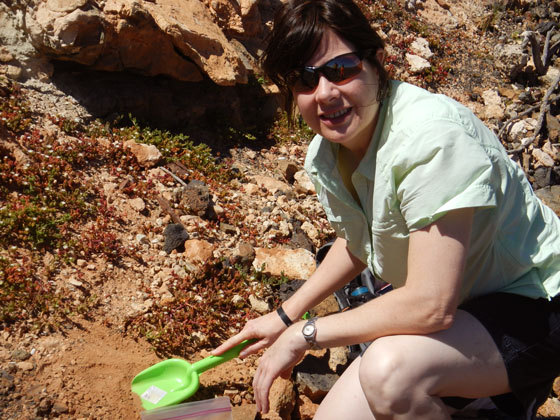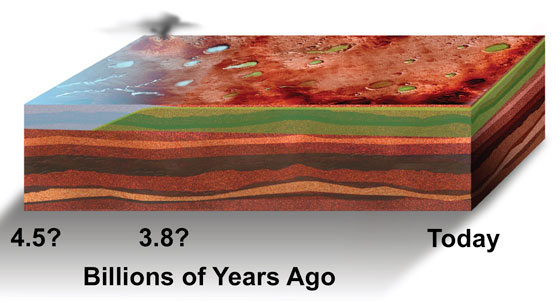
By Janice Bishop
I study the spectral fingerprints of minerals and rocks in the lab in order to generate a spectral library for identifying these materials in the martian data collected by CRISM, a spectrometer orbiting Mars. As a Co-Investigator on the CRISM team, I map outcrops of rocks such as clays, carbonates, and sulfates that tell us about the kind of water that was once present on Mars.

I also collect and study Mars analog rocks and soils at a variety of locations – including volcanic islands, cold deserts, hydrothermal regions, and acidic aqueous sites. I also examine meteorites, which are the only martian samples available on Earth to date. Characterizing these analog rocks helps us constrain the duration of liquid water on ancient Mars and also the acidity and temperature of that water.
Through joint analyses of Mars analogs on Earth and spectral images of Mars, I’m working to identify sites on Mars that may have been able to support life in the past. I’m part of a team proposing Mawrth Vallis as a landing site for future missions because of the importance of this region for astrobiology and potential resources for human missions.

This model shows how clays may have formed on early Mars when the surface held abundant water (blue). About 4 billion years ago clays (green) formed on much of the surface. Subsequently, the water dried up and the clays were buried. Now we see them excavated on the surface where the later lava has been removed by impacts or surface erosion.





